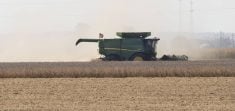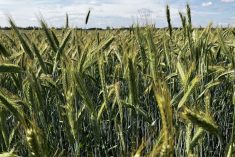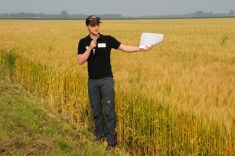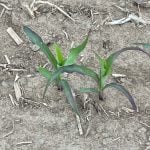The crop insurance deadline for seeding Manitoba soybeans is being extended two days in Area 1 and five days in Areas 2 and 3, with no changes in Area 4, starting this year, the Manitoba Agricultural Services Corporation (MASC) announced May 20.
The new deadlines (see below) reflect farmers’ access to improved soybean varieties, MASC said in a news release.
News of extended crop insurance deadlines comes in a year when many producers have been unable to get into their fields as of mid-May.
Read Also
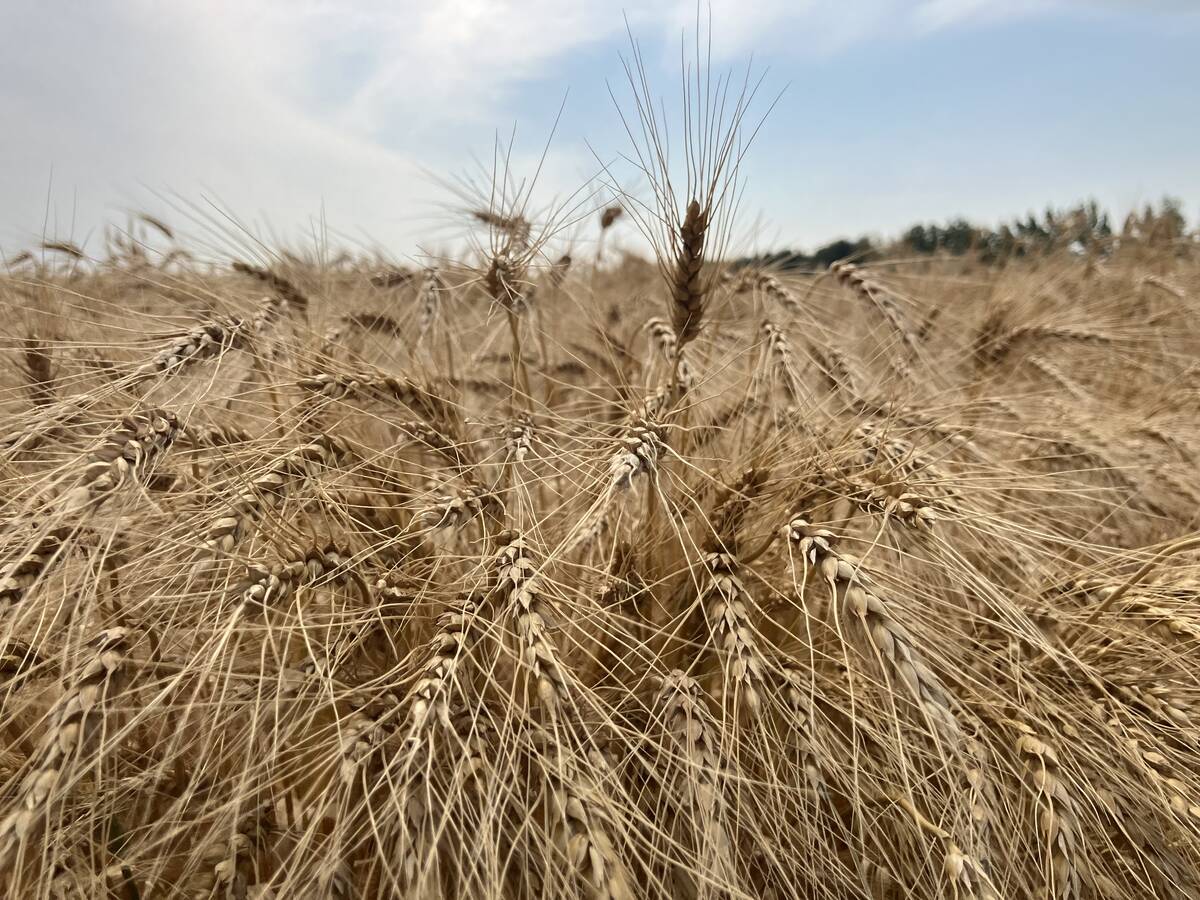
Prairie spring wheat looks like a bumper crop
Canada will likely set a new record for spring wheat yields this year, topping the previous mark of 54.1 bushels an acre set in 2020.
“MASC is not considering seeding deadline extensions for other crops at this time,” the release said.
Farmers in Area 1 have until June 8 to plant soybeans and be eligible for full crop insurance coverage. The previous deadline was June 6.
Area 1 farmers have until June 13 to seed soybeans with a 20 per cent reduction in crop insurance coverage. The old deadline was June 11.
In Areas 2 and 3, the new seeding deadline to qualify for full coverage is June 4 — five days longer than the old May 30 deadline.
Area 2 farmers have until June 9 to plant soybeans with a 20 per cent reduction in crop insurance coverage.
The soybean seeding deadlines in Area 4 are uncharged at May 30, with no option for reduced coverage past that date.
The announcement came just three days after David Van Deynze, Manitoba Agricultural Services Corporation’s (MASC) chief product officer, said in an interview that there were no immediate plans to extend seeding date deadlines.
However, he didn’t close the door to the possibility, saying at the time that, “We are looking at them to make sure they are still relevant and accurate from an agronomic perspective, but we’re not looking at it from a ‘how wet is it outside?’ perspective.”
The new, extended deadlines are not expected to materially change the risk to the AgriInsurance program and therefore premiums won’t change, according to the May 20 release.
“These changes were made in consultation with Manitoba Pulse and Soybean Growers after a review of available data and agronomic considerations such as growing season length and the use of varieties that are more adapted to Manitoba conditions since the seeding deadlines were last considered,” the release said.
The finish line
The final spring seeding deadline for many major crops in Manitoba is June 20. AgriInsurance contract holders who are unable to seed by June 20 due to wet conditions are eligible for Excess Moisture Insurance (EMI).
The last time the Manitoba government extended crop insurance seeding dates was 2004, despite several major floods and delayed seeding since then.
Social media posts showed a bit of seeding underway in Manitoba last week in the wake of a wet, cool spring, but more rain ahead of the Victoria Day long weekend forced farmers from their fields.
Meanwhile, hundreds of acres were still under water in the Red River Valley May 20.
Manitoba Agriculture reported that, as of the second week of May, seeding was just four per cent complete compared to 44 per cent the same time last year and a five-year average of 50 per cent.
That’s a big worry to farmers as yields decline the longer seeding is delayed.
In the meantime, the dates to have certain crops such as canola, soybeans and grain corn seeded to be covered by crop insurance grows nearer.
While it can’t help but add to farmers’ stress, Manitoba Canola Growers Association president Chuck Fossay told CBC Radio May 19 that farmers know they are at the mercy of the weather.
“Farmers are used to these extremes,” he said. “It starts to get a little wearing as we get close to seeding deadlines for crop insurance but we will rally on. It’s not the first time that we’ve had late spring and wet fields and we’ve always managed to get a crop in, in the past.”
Last year, seeding was 99 per cent completed by the second week of June, and the same applied for the five-year average.
“Farmers are struggling to get a crop in, there’s no doubt about that, but that doesn’t change when it’s too late to seed some crops,” Van Deynze said. “Just because they are later starting doesn’t automatically mean they’re going to have an open fall.
“The part we struggle with is that our seeding deadlines are based on agronomic and yield data in the first place and, second, they are already, in our minds, quite generous in that they are probably later than they should be,” he also said.
Insured farmers unable to seed by the deadline are generally eligible for a $50-an-acre payment under Excess Moisture Insurance (EMI) (see sidebar).
Back in time
Manitoba’s 1997 ‘Flood of the Century’ and the 2011 flood may provide some insights to this spring, but with caveats. Like this year, a huge dump of snow in April 1997 contributed to the Red River flooding thousands of acres of farmland between Emerson and Winnipeg. That flood, however, started and ended sooner than this year.
In a news release on June 6, 1997, the Manitoba government estimated just 200,000 of Manitoba’s 10 million acres had yet to be seeded. Officials estimated only 10,000 to 25,000 acres would go unseeded.
“Despite the fact over 600,000 acres of prime Manitoba farmland were under water at the height of the flood, the favourable weather in the past few weeks gives us the confidence most producers will be able to get their crops in before the deadline,” then-agriculture minister Harry Enns said at the time.
The key was “favourable weather.”
Despite delayed seeding, Manitoba crop yields in the flood year exceeded the previous three-year average.
In 2011, meanwhile, which saw substantial flooding in the Assiniboine River Basin, a record three million insured acres went unseeded due to excess moisture, resulting in EMI payouts of $162.3 million.
That year, average yields for many crops were below the previous three-year average.
While we don’t know now when most of this year’s crop will be seeded, it may end up going in later than in 1997. The rest of the 2022 growing season, likewise, is unknown, although fingers province-wide are crossed for ideal growing conditions and an extended fall.
Crop insurance seeding deadlines were extended in 1997, during the ‘Flood of the Century,’ but at that time the deadline for seeding wheat was June 15. That year it was extended to June 20 and made permanent a few years later.
In 2004, the last time Manitoba saw extended MASC deadlines, the spring was wet and cold, like in 2022. In a May 31, 2004, news release, then-agriculture minister Rosann Wowchuk announced a five-day seeding deadline extension, except for crops with a June 20 deadline. Then, like now, that already long deadline covered cereals and flax.
As of May 31, 2004, an estimated 75 per cent of Manitoba’s crop had been seeded.
Manitoba Agricultural Services Corporation (AgriInvest) seeding deadlines
- All classes of wheat, oats, barley and flax: June 20
- Argentine Canola:
- Area 1: June 15, reduced coverage, June 20
- Area 2: June 10, reduced coverage, June 20
- Soybeans:
- Area 1, June 8, reduced coverage, June 13
- Area 2, June 4, reduced coverage, June 9
- Area 3: June 4, reduced coverage, June 9
- Area 4: May 30, no reduced coverage
- Grain Corn:
- Area 1: June 6, reduced coverage, June 11
- Area 2: May 30, reduced coverage, June 4
- Area 3: May 30, reduced coverage, June 4
- Area 4: May 30, Reduced coverage, June 4
NOTE: Where coverage is reduced, the reduction is 20 per cent.
Excess Moisture Insurance
Excess Moisture Insurance (EMI) compensates farmers who can’t seed their crops before June 20 due to excessively wet conditions.
EMI deductible is five per cent of the total acres available for seeding.
The Manitoba Agricultural Services Corporation (MASC) adjusts the deductible according to the farmer’s recent EMI claim history.
The reduced deductible option allows farmers to buy-down their deductible to five per cent
The basic payout is $50 an acre, but farmers can buy coverage of $75 or $100 an acre.
Rented land had to be added to a farmer’s AgriInsurance contract by March 31, 2022 to be eligible for EMI coverage in 2022. Rented land added after March 31 will continue to be eligible for AgriInsurance for seeded crops and hail insurance, but not EMI.
The deadline for making changes to 2022 EMI options was Nov. 30, 2021.
Land purchased on or before June 30 of the crop year is eligible for EMI.
A full list of crop deadlines can be found at the MASC website.




